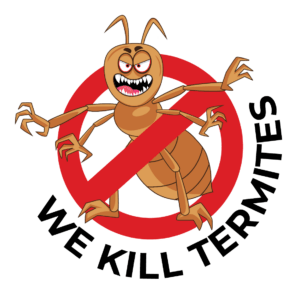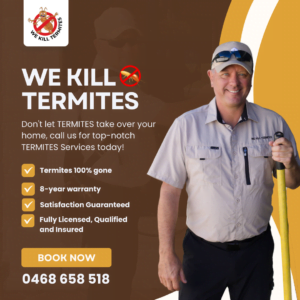What is a Termite Treatment?
A termite treatment is the application of a chemical all the way around the perimeter of the house creating a continuos chemical treated zone typically called a termite “barrier”.
There are a few different types of treatments that should be mentioned as they are the most common forms professionally and commercially done.
- Termiticide application
- Monitoring and bait stations
- Targeted termiticide application
- Gas fumigation
Why Get A Termite Treatment?
There are 2 main reasons you would get a termite treatment around your home.
- To kill active termites already in the property
- avoid termites from infesting the property
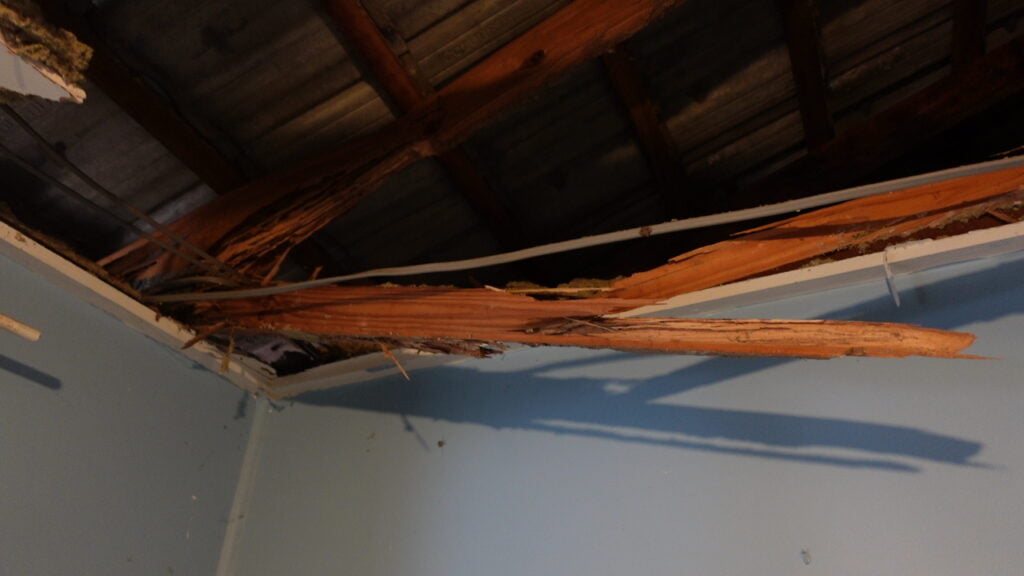
Remedial or Preventative
A remedial treament is when you have active termites, damage or workings on the property and want to avoid further damage, eradicate them and remove them from the property.
Preventative treatments are done by wise homeowners, so that they can avoid potentially hundreds of thousands of dollars in damages that come from termite damage.
It is also really important to mention, those who have metal frame homes still have the same chance of getting termites in their home. Although, they won’t eat and structural parts they can stilll cause over $10,000+ in damages for skirting and window frames.
Termiticide Application
The first and most common form of termite treatment and management is a termiticide application or “chemical treatment”.
Apart of our full perimiter home termiticide application, you receive 8-years warranty on the treatment thanks our chemical of choice Termidor & Termidor HE
What does it involve?
A chemical treatment involves creating a deep chemical barrier around and underneath the perimiter of the structure which makes termites unable to penetrate and eat your homes timber.
On homes, we drill holes 10cm parralell to the wall every 45cm on the concrete areas and dig a trench around the slab edge on non-concrete areas.
This is much better than when other chemicals are chosen to use as they have to be every 20cm which will is important on tiled areas as they will have to drill into the middle of the tile.
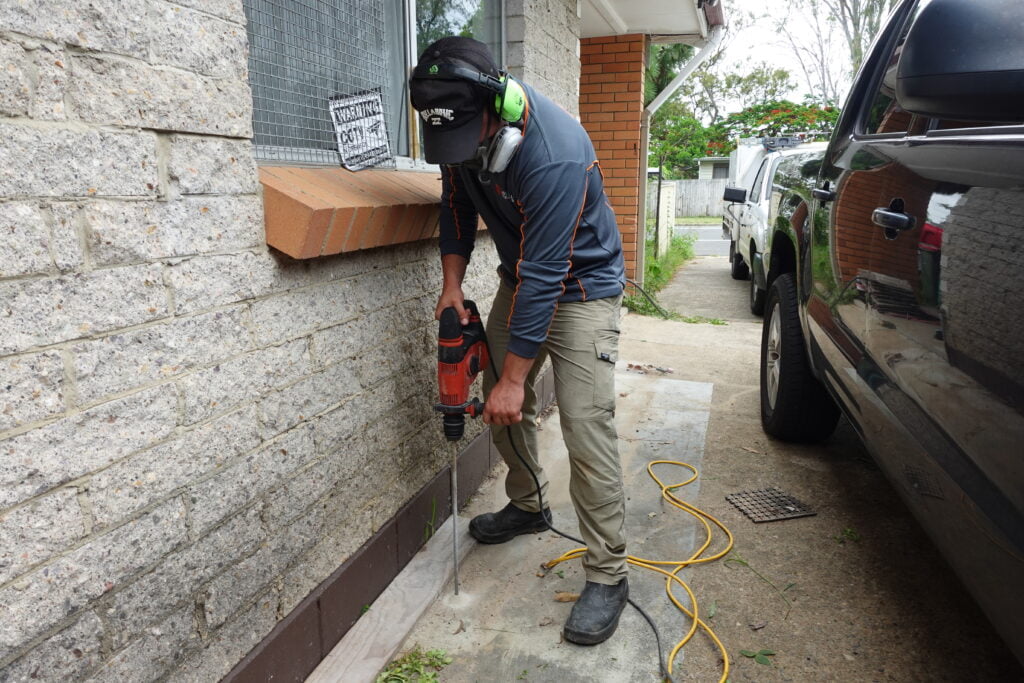
The chemicals used for this treatment can vary as there are repellant and non-repellant chemicals.
The best option is a non-repellant chemical such as Termidor or Termidor HE which offers so much peace of mind that you don’t get otherwise.
The repellant chemicals such as Bifenthrin serve as a alternative to better chemicals purely for its much cheaper price, but you won’t get a good treatment with that.
We will only ever use these 2 chemicals (Termidor & Termidor HE) for chemical treatments for termites as it proves time and time again that it is the best chemical on the market and ALL termite and pest control companies know this.
How They Work
Termidor & Termidor HE both have the active constituent fiprnil at 100g/L and 96g/L respectively, the way in which fipronil disrupts and kills termites and their colonies is quite complex.
Fipronil is a non-repellent, phenylpyrazole insecticide which works by contact or ingestion of the chemical by target termites. After exposure the fipronil blocks GABAa-gated chloride channels in the Central Nervous System (CNS). This prevents the uptake of chloride ions through those channels leading to excess neurol stimulation causing paralysis and death.
The 2 most important distinctions between a repellent chemical such as Bifenthrin and a non-repellent such as Termidor is that of which the bifenthrin has awful binding affinity which means it doesn’t bind to the substrate (soil) well at all. This is most important when injecting the chemical under a slab, a bad pest control company can’t guarantee they have achieved a continuous chemical treated zone.
Termiticide Application Video Below
Monitoring and Bait Stations
Termite monitoring and bait stations are small plastic stations that house either, soft palatable timber for the monitorign stations and chemical cartridges for the bait stations.
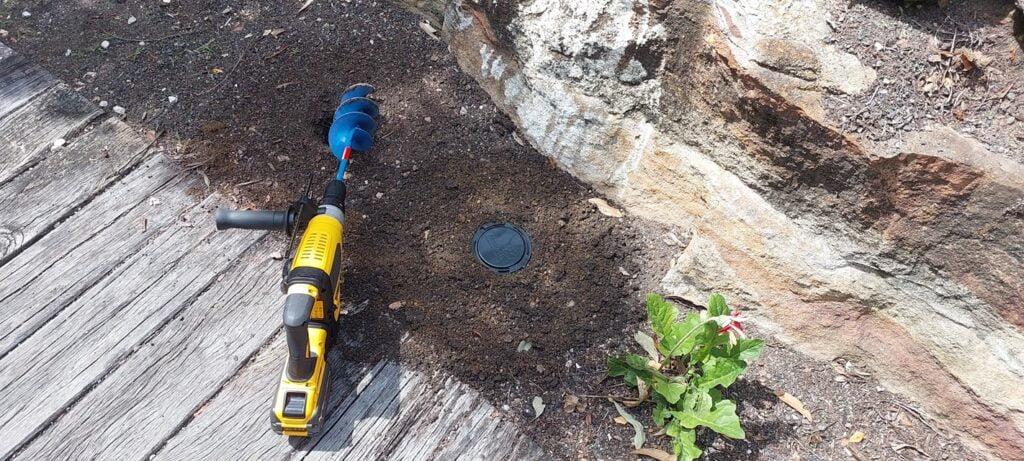
How they work
The stations have large vertical openings around it which make it very easy and accessible for termites to eat the bait. The natural foraging behaviour of termites allows us to accurately predict that they will eventually eat the bait.
The amount of termite bait in the cartridges is enough to kill multiple termite colonies. The bait station we choose to use being Trelona ATBS, have the chemical novaluron which is an insect growth regulator (IGR).
When ingested the novaluron impairs the termites ability to synthesize chitin and inhibits their ability to molt. The molting process is where the termite gets rid of its exoskeleton rendering chemical useless. So impairing that process and with the colony dispersing the chemical among themselves, the termites die during the molting process or are incapacitated by their inability to do so.
In a Jorunal Article posted by the Jornal of Economic Entomology, it found that against Coptotermes gestroi (wamann) with a colony size of roughly 63,000 workers that after access to novaluron it took 45 days to cease feeding on wood items.
More imprtantly, after just 91 days, there was a subsequent collapse and elimination of the colony.
Application of Termidor + Trelona TBS Stations
To get the most effective termite treatment, protection, prevention and colony control of termites, the best option is to combine the chemical treatment with the baiting system. We always opt for Termidor / Termidor HE combined with Trelona ATBS.
A study published by Journal of Economic Entomology: Comparative Impact of Chitin Synthesis Inhibitor Baits and Non-repellent Liquid Termiticides on Subterranean Termite Colonies Over Foraging Distances: Colony Elimination Versus Localized Termite Exclusion have consulusively found the effectiveness of liquid termiticide paired with CSI’s.
Over a 12 metre foraging distance, with coptotermes gestroi (wamann). When the structure was treated using fipronil after 2 weeks all termites within 1.5 metres has died but used alternative foraging galleries. After the 12 week study there was no change in colony size compared to the control.
Comparatively, the colonies exposed to noviflumuron had no foraging changes for approx 40 days but progressively ceased activity in the galleries. After the 12 week experiment, colonies were near elimination with only few workers and soldiers, and all colonies were eliminated within 95 days.
The study referenced used the chitin synthesis inhibitor (CSI) noviflumuron which is different to our preffered choice of novaluron. The results of this study are not indicative of results you will see if your property requires a similar treatment as there are different conditions that may effect the treatment.
Targeted Termiticide Application
Targeted Termiticide Application or “part treatment” isn’t too disimilar to the termitice application. The main difference between the two is that targeted is just to one or more particular spots with a very specific intention.
A couple reasons why someone may want a targeted treatment
- They may have termites in a tree stump in their garden
- High risk termite entry point to home
- e.g. timber cladding is touching ground
- earthwood between home and ground
- Old termite damage on tree or fence
Another major reason someone may get a targeted treament is if they are on a lower budget and after our assessment, we determite trouble areas for the homeowner. They may just treat a couple areas of the home where necessary.
To get the best results out of a targeted termiticide application using Termidor, we will find the nest of the termite colony and treat it directly to eliminate it at the source. The problem with treating small areas is that it doesn’t typically kill the entire colony if a subset of the colony are exposed to the chemical. It will kill all termites within approximately 1.5m.
Gas Fumigation
Gas fumigation is when a home is completely infested with termites, they create basically a bubble around the home which is air tight. Putting gas into the area making it uninhabitable for termites anywhere in the home.
This method is extremely expensive and requires lots of work to do, for both the homeowner and pest control company. Typical price for a termite gas fumigation ranges from between $3500 and $6000 aud.
Why would you do this over a termiticide treatment?
Not many people would, from the price comparison and effort for all parties. It makes sense in most circumstances to get the termiticide application. There are few cases where it is better for the home to have a gas fumigation because of the termite species in the home.
WE CAN HELP
WE KILL TERMITES is family owned and operated so we guarantee the best quality and service there is. If you want your home treated for termites or have any other questions contact us below or check out HERE
